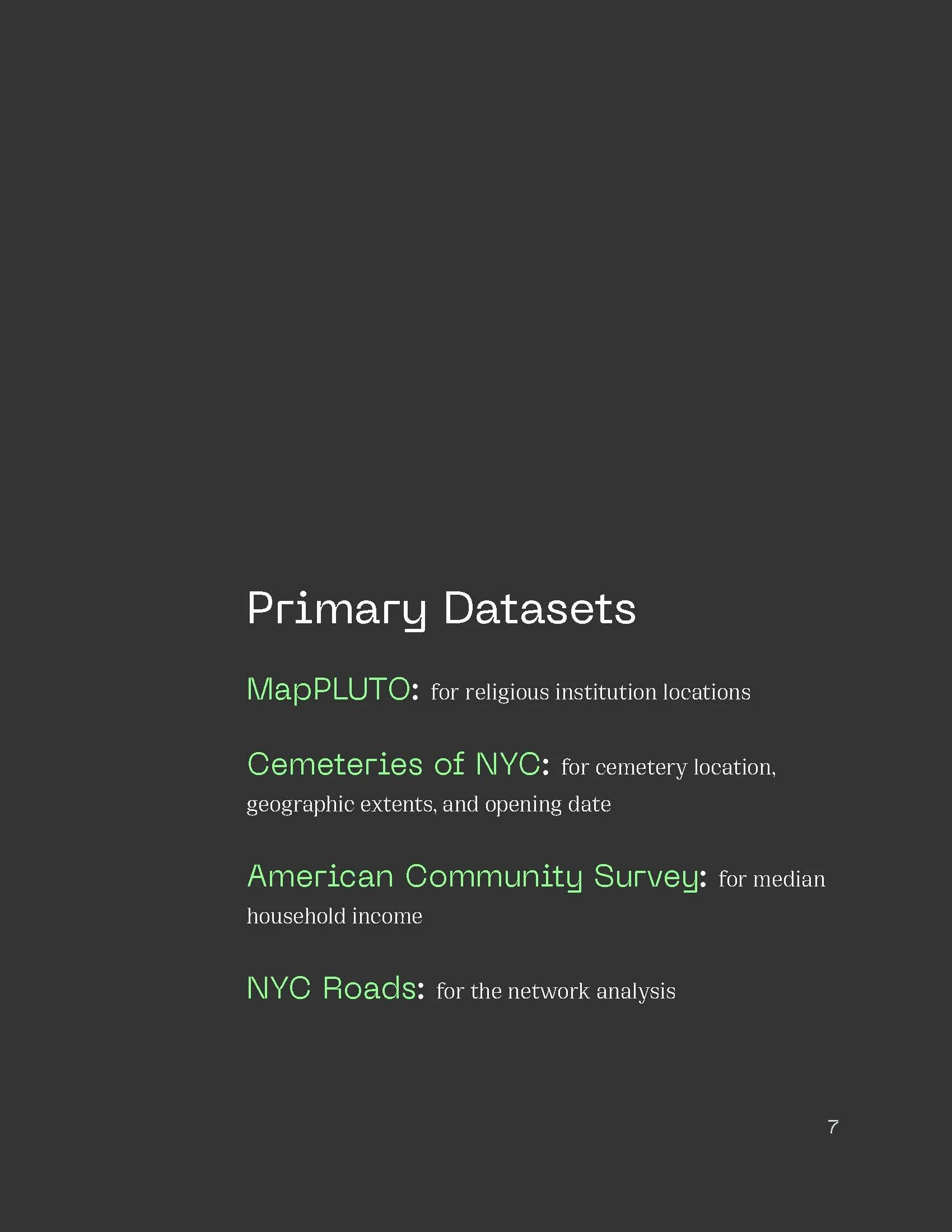
Remembrance
/
Religiosity
/
Remembrance / Religiosity /
Mapping Remembrance and Religiosity in New York City
The afterlife has long been both spiritual and spatial in nature, but when available land is scarce and property values are on the rise, how can cities reckon with how we inter and honor our dead? In the last 200 years, New York City has lost burial sites to accelerating real estate development and rising land values. Manhattan was once home to dozens of active burial sites. Now, only a handful remain. While other boroughs maintain a larger number of burial sites, encroaching development and rapid gentrification have put many of these spaces at risk. For many New Yorkers, these physical limitations on space have become important factors in making arrangements for the afterlife, regardless of income, religious affiliation or personal beliefs.
Our research project explores the relationships between communities across New York City and their relative access to cemeteries. Given the tension between rapid development and the conservation of cemeteries, the project will inform and underscore the importance of preserving and protecting these spaces in order for them to remain places for communities to reflect, recreate and reconnect with their past. This research also prompts philosophical and design questions such as who can afford a final resting place and how the erasure of these sites may construct new spatial practices for remembrance and ritual.
Columbia University GSAPP
Fall 2022
Instructors: Leah Meisterlin, Alanna Browdy
Collaborators: Ethan Floyd, Jaron Kaplan
Tools: ArcGISPro, Adobe Creative Suite






















